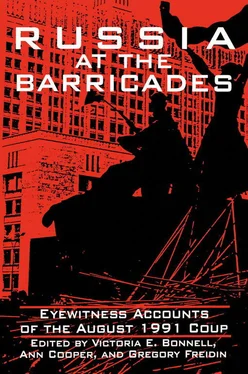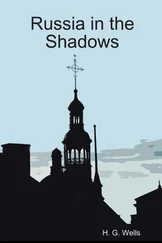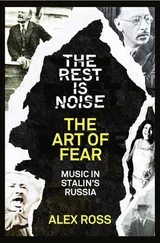RUSSIA AT THE BARRICADES
EYEWITNESS ACCOUNTS OF THE AUGUST 1991 COUP
Edited by Victoria E. Bonnell, Ann Cooper, and Gregory Freidin
To our children, Anna Freidin and Tom Keller
Erecting a barricade near the White House
Civilians rush to form a human chain against approaching tanks on Kalinin Prospect
A civilian appeals to a soldier near the White House
Tanks lined up on Kutuzov Prospect
Women hauling debris to build a barricade as tanks approach the White House
A barricaded street near the White House, mid-afternoon on August 19
Demonstrators marching from Manezh Square to the White House
A civilian confronts an officer in Manezh Square
“Yeltsin Has Called for a General Strike”
“Outlaw the CPSU!” and “Put the Bolshevik Putschists on Trial!”
People gathered for a rally by the Hotel Moskva in Manezh Square
Protest leaflets at a metro station on Kalinin Prospect
People carrying an enormous tricolor flag to the midday rally at the White House
The Tuesday rally, with the tricolor flag draped over the White House balcony
The crowd listening to speeches at the Tuesday rally
Children on a pro-Yeltsin tank near the White House
Defenders of the White House set up camp
Men guarding the White House early Tuesday evening
A makeshift memorial on the spot where a young man was killed in the early morning of August 21
Three young men who perished at the barricades
A trolleybus damaged by an armored vehicle in the early morning of August 21
Revolution Square, Saratov: “Hangman of Russia”
At the Mariinskii Palace, St. Petersburg: “No to Red Fascism!” “Join the Indefinite Political Strike!” “No to the CPSU Dictatorship!”
Rally in Palace Square, August 19
Rally in Palace Square, August 20
A soldier reads Yeltsin’s appeal to the armed forces
Defenders of the White House, Tuesday night
On August 19, 1991, eight high-ranking Soviet officials took over the government of the USSR by force and proclaimed themselves the country’s new rulers. Less than seventy-two hours later, their attempt to seize power had collapsed. Though short-lived, the coup produced consequences few could have foreseen. Soon afterward, the Communist Party that had ruled Russia since 1917 was suspended and dispossessed. Five months after the coup, the Soviet Union itself had ceased to exist.
The editors of this volume had the good fortune to witness at close range the monumental events that shook Russia and the world in August 1991. Ann Cooper, the National Public Radio bureau chief in Moscow since 1986, was covering a story in Vilnius, Lithuania, when the coup began. By the end of the day she was back in Moscow. Victoria E. Bonnell, a sociologist at the University of California, Berkeley, and Gregory Freidin, a former Muscovite who teaches Russian literature at Stanford University, arrived in Moscow on August 15 to do research and visit friends and family.
Experienced though we all were in observing and writing about Soviet affairs, we found ourselves overwhelmed and astonished by the tremendous power of the events. With millions of others in Moscow, St. Petersburg, and throughout the Soviet Union and the world, we watched with horror and fascination as the junta sought to turn back the clock to a time—a mere six years earlier!—when a corrupt and brutal Communist party-state had ruled Russia.
Several months after the event, the three editors reunited in Berkeley, California. Despite the time that had passed, we still felt the magnetism of the August days, when democratic reforms were suddenly in jeopardy, and the whole country teetered precariously on the brink of a civil war.
To do honor to the events and their participants and to preserve the vibrancy of the moment, we decided to put together this collection of eyewitness accounts of the three fateful days in August. We wanted to show the events from a variety of points of view—those of the plotters, the leaders of the democratic resistance, foreign and Russian journalists, visiting émigrés and scholars, military officers and ordinary citizens of diverse occupations. Our accounts concentrate on Moscow, where most of the key events were played out. St. Petersburg (then still called Leningrad), the provincial city of Saratov, and the Tajik capital of Dushanbe are represented as well. We have included some documents, such as the major declarations and decrees issued by the Emergency Committee and by Russian President Boris Yeltsin, to provide the context for the August events.
Above all, we have tried to give a sense of what it was like to be there and to see with one’s own eyes how the people of Russia, as George Kennan put it, “turned their back on the manner in which they’ve been ruled—not just in the Soviet period but in the centuries before…. Even 1917 had nothing quite like this” ( New York Times , August 24, 1991).
The editors would like to thank George Breslauer, who gave us the idea for this volume. Gail Lapidus provided valuable and timely support for the project through the Berkeley-Stanford Program on Soviet and Post-Soviet Studies. Without research assistance, the volume would have been far longer in the making.
When we began work on the volume, we placed a notice in the newsletter of the American Association for the Advancement of Slavic Studies inviting contributions. We received quite a number of responses, and some of them have been included here. We regret that we could not publish all of them, and we thank those contributors whose work did not fit the final format of the book. Dorothy Atkinson was especially helpful in alerting us to material and potential authors for the volume.
The project benefited greatly from the assistance of several Berkeley graduate students. Special thanks to Howard Allen, Jeffrey Rossman, and especially Veljko Vujacic. George Breslauer, Victor Zaslavsky, and Veljko Vujacic gave us valuable comments and suggestions on the introduction. We also appreciate the help we received from Donald J. Raleigh, David Hartsough, and Irina Mikhaleva and Marianna Freidina in Moscow.
Most of the translations from Russian that appear in this volume are by Gregory Freidin. We have found it necessary, in many instances, to retranslate well-known documents and speeches because of inadequacies in wire-service and newspaper translations. Howard Allen, Jeffrey Rossman, and Veljko Vujacic also contributed to the translations.
At M.E. Sharpe, Patricia Kolb’s enthusiasm for the project gave us the burst of energy we needed to finish it. She provided excellent assistance, and we thank her and her colleagues for bringing out the book so expeditiously. Leona Schecter also provided valuable advice along the way.
Some of the selections in this volume originally appeared elsewhere, mostly in Russian newspapers and journals. The editors would like to thank these publications for permission to reprint the following articles:
Gregory Freidin, “To the Barricades: A Street-Level View of Moscow, August 19,” The New Republic , September 30, 1991.
Vladimir Petrik, “Moscow’s M. V. Khrunichev Machine-Building Factory Reacts to the August Coup,” Literaturnaia gazeta , January 1, 1992.
Nikolai Vorontsov, “Minutes of the Council of Ministers Meeting, August 19, 1991,” Komsomolskaia pravda , August 24, 1991.
Читать дальше













